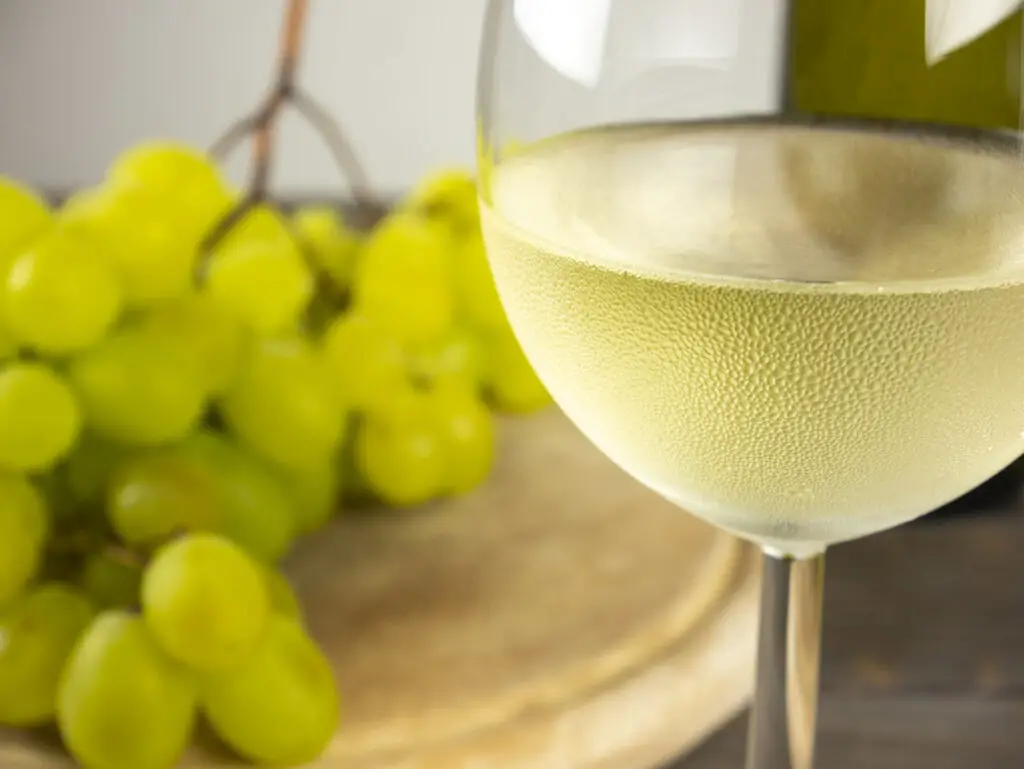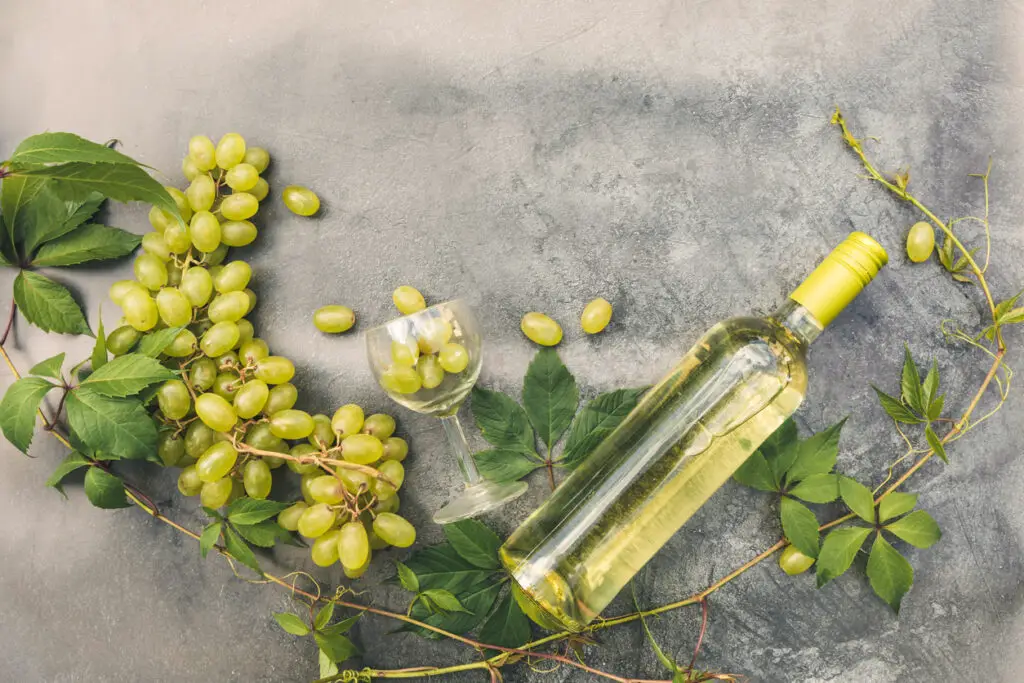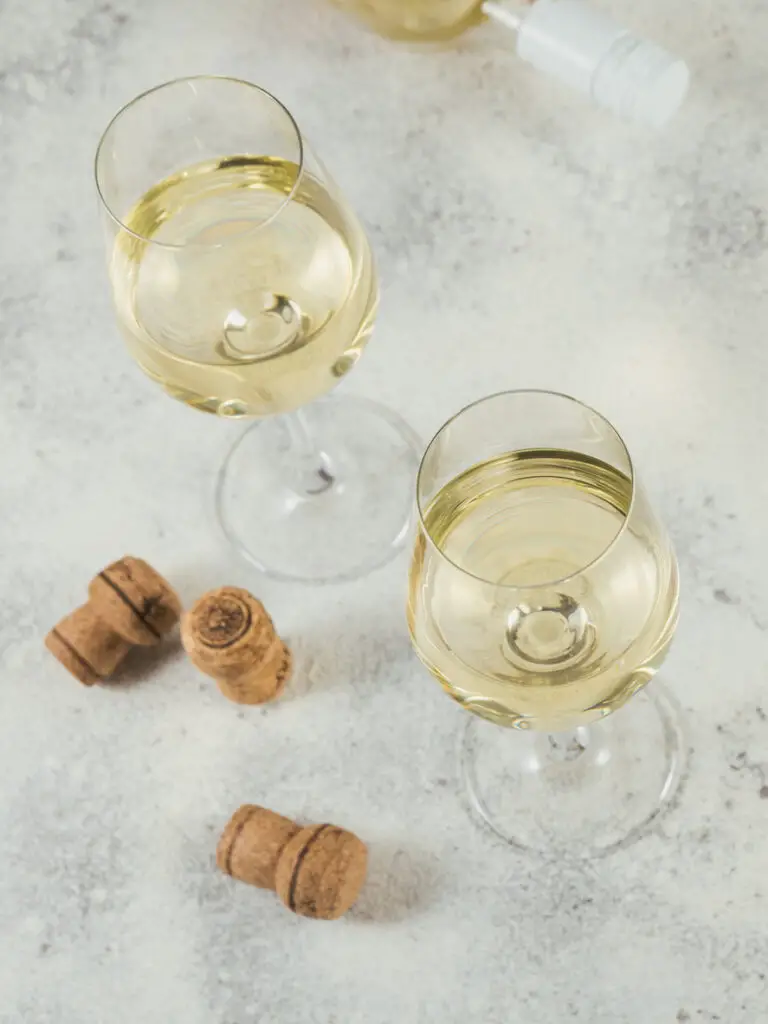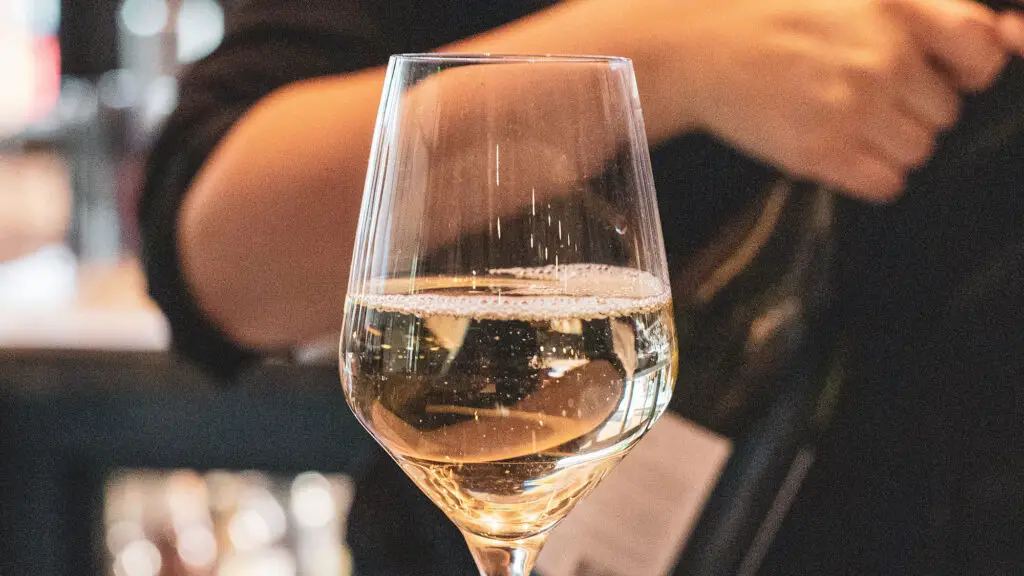Wines come in many different styles and flavors. It really is a matter of preference; everyone has their favorite wine. One of the most popular choices is a dry, white wine that completes many dishes beautifully. If this is the case, then you may be wondering, what is the driest white wine?
The driest white wine is a French Muscadet. French Muscadets have a very dry palette with a strong minerality and hints of citrus. Another more common dry white wine is Sauvignon Blanc.
Let’s take a deeper look at what goes into the dryness of wine and what some of the most popular dry white wines are.
What is Dry Wine?
Calling a wine “dry” is one of the first characteristics mentioned when discussing a bottle. But it is also a word that is often misused by wine lovers. The reason is that many people use it to describe the sensory characteristics of the wine, but that is not what it should refer to.
Often, the term “dry” is confused with a sense, a drink that will “dry” out your mouth. But, the glass of wine that creates a drying sensation inside your mouth is one that is strong in tannins and doesn’t have to do with the wine being “dry.” It’s confusing, we know. Many wines aren’t sweet while also being high in tannins; these two are not the same thing. A glass of wine will only dry out the mouth if it has powerful tannins, not if it is “dry.”
A dry wine is a wine that doesn’t have any sugar, so it isn’t sweet. When grape juice becomes wine, the fermentation process produces alcohol since the yeast eats the sugar in the grape juice. Depending on the wine, a winemaker may choose to stop the fermentation process before the yeast consumes all the sugar so that the wine stays slightly sweet.
Residual Sugar
Author Note: This sugar that the winemaker leaves behind is called residual sugar. If the winemaker decides to make a dry wine, they will let the fermentation process finish all the way through so that the yeast consumes all the sugar. No sugar, so no sweetness; the wine is then called dry.
Keep in mind that the absence of sweetness or dryness does not mean there is an absence of fruit. When drinking a dry wine, you may still taste fruit; it just won’t taste sweet like juice. Many Americans don’t really like drinking dry wine since they are used to consuming foods with higher sugar content. Instead, they prefer drinking semi-dry wines with a slight sweetness.
Alcohol in Dry Wines

Another common misconception concerning “dry” wines is that these are higher in alcohol. So, if you like wines with more alcohol, you like “dry” wines. But once again, this is not the case; this connection is made because we tend to experience more of the actual alcohol taste alongside the fruit.
These flavors may lead to an absence of moisture in the mouth, which we rationally would consider as dry. It is possible for a wine to be high in alcohol and also not sweet; a high alcohol wine isn’t always “dry.” In fact, there are many very high-in-alcohol dessert wines that are very sweet.
Some Dry White Wines For You
Here are some of our top picks for dry wines to help make your decisions easier.
Very Dry Whites
These are wines that have less than four g/L of residual sugar. So, they have a very dry characteristic and a certain crispness that is perfect for dry wine lovers.
Muscadet
This light wine is extremely dry. Muscadet is made using Melon de Bourgogne grapes. These wines shouldn’t be confused with Moscato or Muscat wines, as these are semi-dry and semi-sweet. Instead, Muscadet is sharper, tangier, and full of citrus and mineral notes. These wines are made in the Loire Valley. It’s our answer to the question “what is the driest white wine?”.
Sauvignon Blanc
This is a very dry and crispy wine, which makes it the best for cooking and sipping. It’s lean and clean with herbaceous and grassy flavors along with well-balanced acidity and underlying tones of fruits. Sauvignon Blanc can be found growing around the world. Some of the major regions are Bordeaux, New Zealand, South Africa, the Loire Valley, Austria, and California.
Albariño
This wine is a very popular Spanish wine that has bright acidity and refreshing notes of citrus, and some saltiness. It pairs deliciously with seafood that is a large part of Spanish cuisine. This wine is called Alvarinho by the Portuguese.
Chardonnay
The French Burgundy region is very well known for its incredible Chardonnay wines. French Chablis is a very crisp and lean wine made purely from this grape. The wines from the Burgundy region are full of fruity flavors, including apples, citrus, tropical fruits, and sometimes flint. Newer versions from California and the State of Washington are aged using new oak and also have vanilla flavors. The oak absence in Chardonnay significantly affects the flavor profiles. Without oak, the bright tropical notes are stronger. With oak, the dominating flavors are vanilla.
Torrontés
Torrontés is a wine that is slowly becoming more popular. You will find many delicious bottles of this from South American countries such as Argentina. It’s a very aromatic and fragrant white wine. On the palate, you will notice peach and hints of citrus along with nice acidity and some floral notes.
Medium-Dry Whites

Medium-dry wines are those with 12 g/L of residual sugar. They tend to be a little on the sweeter side than the ones mentioned above but not sweet enough to be dessert wines.
Pinot Blanc
Author Note: Pinot Blanc grapes are a genetic mutation of Pinot Noir grapes. It’s a popular white wine grape that grows in regions such as Germany, Italy, Austria, and Alsace in France. It has a flavor profile like that of Chardonnay with sharp acidity and hints of apples and almonds.
Pinot Grigio/Pinot Gris
Pinot Grigio is called Pinot Gris outside of Italy. In other locations such as Oregon and France, the wines from this same grape are called Pinot Gris. In Germany, they are called Grauburgunder. French Pinot Grigio is a sweet wine and doesn’t really fit in the dry whites section.
Dry Pinot Grigio/Pinot Gris wines are very light, crisp, and have notes of fruits, minerals, and citrus. Italian Pinot Grigio is crisp and minerally, while the French wine is fruity and dry.
Viognier
Viognier is a very aromatic grape. Many French winemakers blend some Viognier with the Syrah to add a delicious scent of citrus. It’s a French grape that’s slowly becoming more popular all around the world due to its strongly fragranced aromas and flavors of peach and honeysuckle.
Grüner Veltliner
This Austria’s peachy wine has delicious hints of pepper and spices. If these grapes are harvested when they aren’t so ripe, then lime is the flavor that dominates. If the grapes are harvested later in the season, the grapes will be riper and produce wines with hints of peach.
Gewürtztraminer
Germany and Alsace produce this spicy and aromatic white. Some other good examples are from New Zealand, California, and Oregon. Not all Gewürtztraminer bottles are dry. This grape can also sometimes be used to make a sweeter, late-harvest version. If you wish to find a dry, choose a German trocken or halbtrocken style. These will have floral, spicy, and citrus notes.
Riesling
Author Note: Another wine grape that grows well in the cooler German climate and some regions of France is Riesling, which can be either dry or sweet. These acidic wines have notes of minerals and fruits like apples. You can also find delicious dry Rieslings from Oregon, California, and Washington.
Champagne

Champagne and sparkling wines from the outside of France are also a type of dry white wine. These bottles are very versatile and diverse. Some champagne can actually be very dry. The champagne region has a sweetness classification to help identify specific wines:
- Extra Brut contains less than .6 percent residual sugar.
- Brut contains fewer than 1.5 percent residual sugar.
- Extra Sec contains 1.2 percent to 2 percent, so it is a medium-dry wine.
- Sec contains 1.7 percent to 3.5 percent sugar.
- Demi-Sec has 3.3% to 5 percent residual sugar.
- Doux has 5 percent or more residual sugar.
Food Pairing for Dry White Wines
Ready to try out some great recipes with dry whites? While there aren’t any hard and fast rules, consider these tips.
- Crisp wines such as Sauvignon Blanc go well with light foods such as halibut with lemon sauce.
- Sauvignon Blanc is also the perfect wine for pairing with a salad, veggies, or any dish with strong herbs, especially dill or basil.
- Oaky wines that have toasty flavors like Chardonnay work nicely with rich and fatty foods, such as fettuccine Alfredo or lobster with butter sauce.
- Spicy or acidic white wines such as Riesling, Viognier, Torrontés, or Gewürtztraminer go nicely with spicy foods, such as Asian dishes.
- Champagne and sparkling whites pair well with salty and umami foods.
- A fruity dry white like Pinot Gris is delicious with delicately flavored dishes such as shellfish.
- Albariño, with a slight salinity, is perfect with raw fish like sashimi.
Wrapping Up
As you can see, many diverse wines fit into the “dry” category. Always remember that this term doesn’t refer to the consistency or texture but the sweetness of the wine. So next time you are in the store searching for a dessert wine, stay away from the dry wine section.
We hope you enjoyed this article on what is the driest white wine. We wish you luck in finding your favorite dry white wine!
To living a full-bodied life,
Wesley

